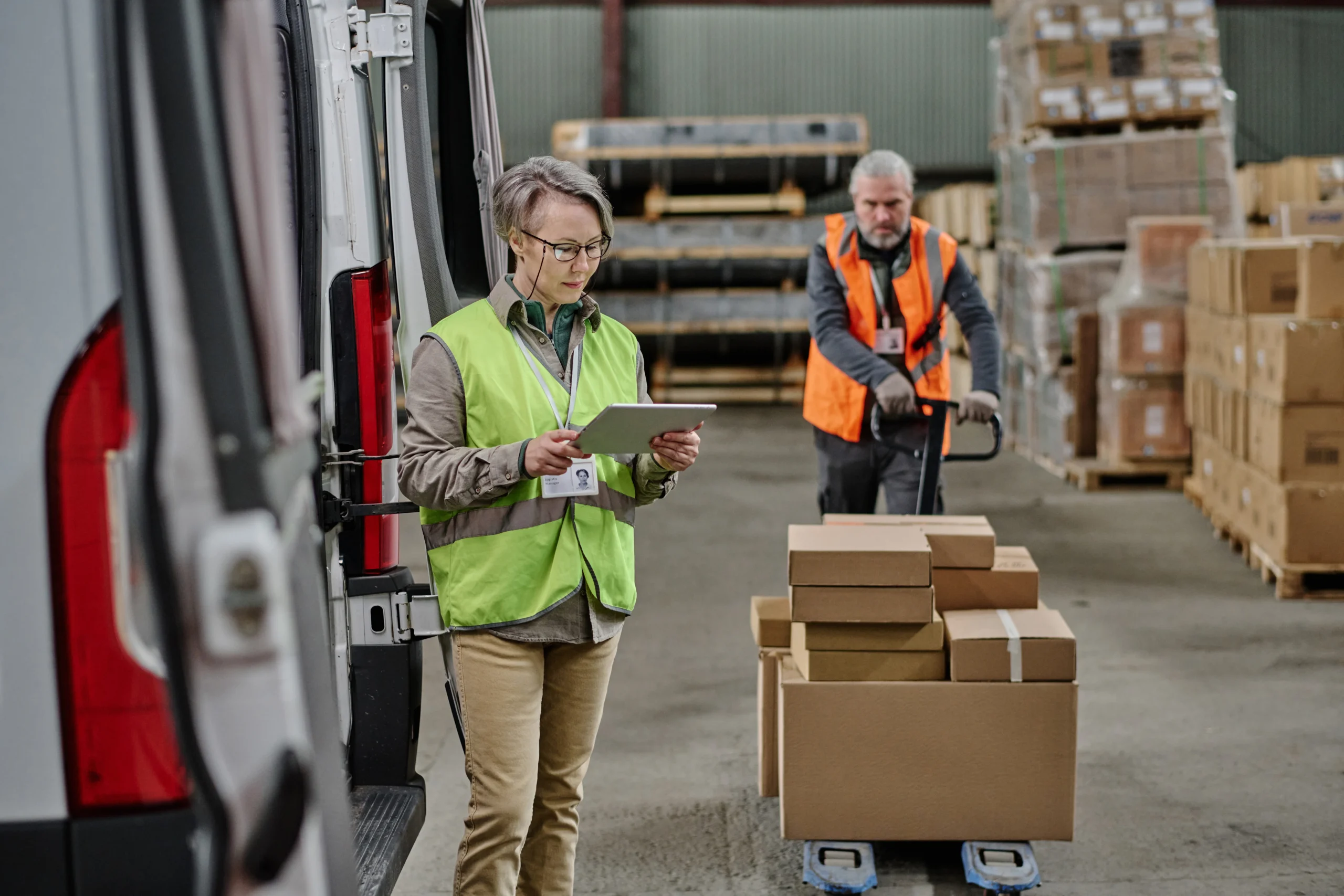Table of Contents
ToggleCross-docking is a logistics method where goods move directly from an inbound truck to an outbound truck without long-term storage. Think of it as a pit stop in your supply chain—products arrive, get sorted, and quickly continue their journey.
This process eliminates traditional warehousing, saving both time and costs. For businesses, cross-docking requires a lean, efficient system that operates like clockwork, with every step carefully planned and coordinated.
At Tri-Link FTZ, we’ve seen firsthand how cross-docking can revolutionize supply chains. By reducing reliance on storage and speeding up delivery, it’s become a critical tool for businesses looking to stay competitive in today’s fast-paced markets.

Cross-docking isn’t just about moving goods; it’s about doing it seamlessly. Poor planning can lead to delays, misplaced shipments, or damaged goods, erasing any benefits.
To get it right, businesses need detailed scheduling between suppliers, carriers, and warehouses. It’s crucial to have systems in place to sort and categorize products the moment they arrive.
At Tri-Link FTZ, we’ve learned that success lies in creating workflows tailored to the unique needs of each client. For instance, when working with a retail client, we implemented a real-time tracking system that allowed them to coordinate incoming shipments with outgoing deliveries, reducing their transit time by 20%.
Without such precision, cross-docking loses its edge.
Cross-docking isn’t one-size-fits-all, but many industries find it indispensable. Ecommerce retailers, for example, thrive on fast turnover, which aligns perfectly with cross-docking’s speed.
Perishable goods like food and pharmaceuticals benefit too, as minimizing storage reduces spoilage. Additionally, businesses with predictable demand patterns, like consumer electronics, can use cross-docking to streamline inventory management.
At Tri-Link FTZ, we’ve supported companies across these sectors by customizing cross-docking solutions. One of our most notable cases involved a food distributor who needed to maintain product quality while meeting tight delivery windows.
By implementing a dedicated cross-docking terminal, they improved their delivery accuracy by 15% and reduced spoilage by 10%. Read more.
To make cross-docking work, you need more than trucks and docks. Cross-docking requires infrastructure designed for efficiency, including staging areas for sorting, robust transportation networks, and advanced warehouse management systems (WMS).
Automation tools like conveyor belts and robotics can further speed up operations, while data analytics offer insights into inventory flow. At Tri-Link FTZ, we’ve invested in cutting-edge tools to ensure our clients’ success.
Our WMS integrates seamlessly with transportation management systems, giving businesses real-time visibility into their supply chain. For one apparel client, this meant cutting their order fulfillment time in half, allowing them to meet seasonal spikes with ease.
Key Infrastructure Needs for Cross-Docking | Benefits |
Staging Areas | Streamlines sorting and consolidation |
Advanced WMS | Tracks inventory in real time |
Automation (Robotics, Conveyors) | Reduces manual errors and speeds up processes |
Data Analytics | Optimizes decision-making and forecasting |

While the benefits are clear, cross-docking isn’t without its hurdles. Initial setup costs can be steep, especially for businesses new to the model.
Coordination between suppliers and carriers is another challenge, requiring clear communication and reliable technology. Additionally, handling large volumes of SKUs in limited time can lead to mistakes or delays.
Over the years, we’ve worked with clients to overcome these obstacles. For example, one electronics company faced repeated delays due to poor communication between their suppliers and carriers.
By implementing a centralized communication platform, we reduced their transit errors by 25%, proving that even complex challenges can be resolved with the right approach.
Streamlining cross-docking starts with clear communication. Every party in the supply chain needs to be aligned, from suppliers to transporters.
Standardized workflows, like pre-sorting goods based on destination, can save valuable time. Staff training is another critical piece—employees should know how to handle goods efficiently while minimizing errors.
At Tri-Link FTZ, we encourage businesses to pilot their cross-docking processes before scaling. One client, a pet food supplier, used this approach to identify bottlenecks and refine their system.
After implementing these improvements, their processing times dropped by 30%, and they could handle larger volumes without compromising accuracy.
Transportation is the backbone of cross-docking. Timely arrivals and departures are essential to avoid bottlenecks.
Fleet optimization tools and real-time tracking systems ensure trucks are in the right place at the right time. Strong partnerships with reliable logistics providers also play a significant role in maintaining smooth operations.
At Tri-Link FTZ, we’ve prioritized building a network of dependable carriers. This has allowed us to offer flexible scheduling and reduce transit times for our clients.
For one retail client, our transportation management strategy reduced their shipping costs by 15% while improving delivery speed. Read more.

Data is a game-changer for cross-docking. Analytics tools provide insights into inventory trends, helping businesses predict demand and plan accordingly.
Real-time tracking systems ensure visibility, allowing quick adjustments if something goes wrong. IoT devices and AI further enhance efficiency by monitoring shipments and identifying optimization opportunities.
Tri-Link FTZ uses these technologies to empower our clients. For example, we implemented an AI-driven tracking system for a home goods retailer, which reduced delivery errors by 20% and boosted customer satisfaction.
By leveraging data, businesses can turn cross-docking into a finely tuned operation.
Success stories often illustrate the true power of cross-docking. One ecommerce company we worked with improved their delivery times by 30% using continuous cross-docking.
Another client, a beauty brand, leveraged de-consolidation to handle high seasonal demand while cutting costs. A food distributor used pre-distribution cross-docking to minimize waste and improve product quality.
These examples show that cross-docking isn’t just a theoretical concept—it’s a proven strategy for optimizing supply chains. At Tri-Link FTZ, we’re proud to have played a role in these successes, and we look forward to helping more businesses achieve similar results.
Cross-docking directly reduces costs by eliminating storage requirements and streamlining transportation. Labor and utility savings add up, especially for businesses handling large volumes.
Faster delivery times also improve customer satisfaction, creating loyalty and repeat business. Just-in-time inventory models further enhance profitability by reducing excess stock.
At Tri-Link FTZ, we’ve seen how these benefits translate into real-world success. One client reported a 25% reduction in overall supply chain costs after adopting a cross-docking strategy, while another saw their customer retention rates climb by 18%.

Cross-docking can be a transformative strategy, but it’s not a universal solution. It works best for businesses with predictable demand, high inventory turnover, or products that require minimal handling.
However, implementing it successfully requires significant planning, investment in infrastructure, and a willingness to adapt. At Tri-Link FTZ, we’ve spent over 35 years helping businesses assess whether cross-docking aligns with their goals, and we tailor solutions that fit their unique needs.
If you’re considering cross-docking, start small. Pilot the process with a limited number of SKUs or a specific segment of your supply chain.
Analyze the results, identify areas for improvement, and scale up as needed. With the right strategy, cross-docking can save costs, streamline your supply chain, and delight your customers with faster deliveries.
At Tri-Link FTZ, we pride ourselves on our ability to integrate innovative logistics solutions like cross-docking into our clients’ operations. Our expertise, combined with cutting-edge technology and a customer-first approach, ensures that your supply chain operates at its best.
Let us help you determine if cross-docking is the right choice for your business.
If you’re ready to explore how cross-docking requires strategic planning and precise execution to transform your supply chain, let Tri-Link FTZ guide the way. With decades of experience, state-of-the-art technology, and a commitment to excellence, we’re here to help your business succeed.
Reach out today and discover what’s possible with cross-docking.
Share this article
We have other resources available upon request as well as one-on-one support and personalized answers, just like our services.
Simply contact us anytime and we’ll get back to you to answer your questions and provide meaningful answers that show you how Tri-Link supports your logistics, reduces costs, and accelerates efficiency.
Tri-Link delivers exceptional FTZ and 3PL services tailored to your global trade needs.
Our solutions combine innovation, quality, and efficiency to exceed your expectations and meet your specific requirements.